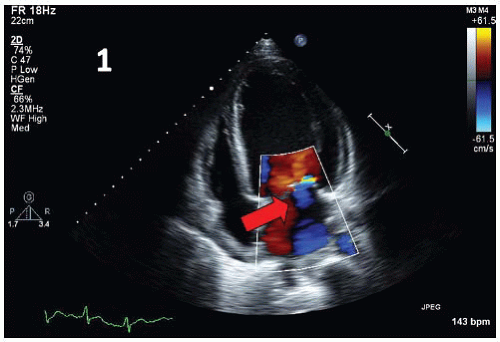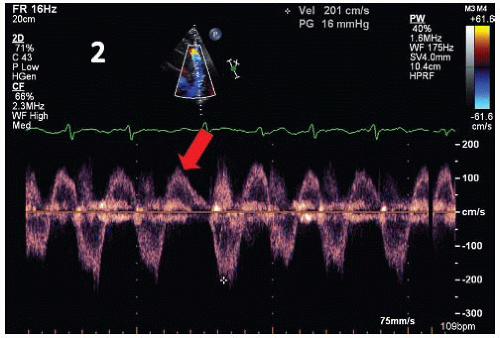Weight Loss and Low-Grade Fevers
A 41-year-old man was admitted to the hospital with a 1-month history of fatigue, shortness of breath, weight loss, and low-grade fevers.
On physical examination, he is ill-appearing. He has a blood pressure of 119/56 mm Hg, heart rate of 123 beats per minute, respiratory rate of 18 breaths per minute, temperature of 100.8°F; and his oxygen saturation is 97%. He has bounding (3+) peripheral pulses, a 1/6 systolic ejection murmur, and 1/4 diastolic murmur at the apex as well as a gallop.
Computed tomography (CT) scan revealed a splenic infarction versus a mass. Blood cultures were also obtained.
See Videos 23-1 to 23-3.
QUESTION 1. Which of the following are true?
A. There is a bicuspid aortic valve with mild aortic regurgitation (AR)
B. There is a trileaflet aortic valve with severe AR
C. There is a bicuspid aortic valve with severe AR
D. There is an aortic valve vegetation
E. There is a bicuspid aortic valve with severe AR and an aortic valve vegetation
View Answer
ANSWER 1: E. The aortic valve is bicuspid with a raphe between the right and left coronary cusp, at times creating the illusion of a trileaflet aortic valve. The aortic valve is thickened with evidence of vegetation and damage of the cusps in the long-axis view. The color Doppler shows wide open AR with diastolic MR.
A. There is severe mitral regurgitation (MR)
B. There is mild MR
C. There is severe AR
D. None of the options
View Answer




ANSWER 2: C. There is evidence of severe AR. Figure 23-3, using color Doppler, demonstrates the presence of diastolic MR, which is seen with severe acute AR and is associated with severely elevated left ventricular end-diastolic pressure. Figure 23-4 depicts the pulse wave Doppler finding of holodiastolic flow reversal in the descending aorta consistent with severe AR.
Stay updated, free articles. Join our Telegram channel

Full access? Get Clinical Tree




